9 Best Portable Solar Panels & Chargers (2024)
Definitive Review
![9 Best Portable Solar Panels & Chargers ([currentyear])<br> Definitive Review Portable Solar Panel FI1](https://topnotchoutdoor.com/wp-content/uploads/2020/03/Portable-Solar-Panel-FI1.jpg)
Share this article:
TopNotch Outdoor is independent – we research, test, and rate the top products to help you make the right buying choice. We sometimes use affiliate links and may receive a small commission on your purchase. Learn more…
This is a complete guide to the best portable Solar Panels & Portable Phone Chargers in 2024.
In this new guide you’ll learn:
- About charging time comparisons;
- The most important criteria when choosing your Solar Charger;
- How to compare amperage, voltage, and watts to find the best sellers;
- Lots more…
Want to know the difference between Monocrystalline Cells vs Polycrystalline Cell Panels?
You’ll discover soon enough…
Let’s get started.
The Great Outdoors beckons, but if you’re like me, you’ll need to carry all sorts of electronic gear and devices with you to enjoy the trip and record it for posterity. From a smartphone to your camera, from tablets to laptops, they all need a source of power for recharging.
- Best Foldable Solar Charger
- Best Solar Panel Kit
- Best Solar Charger with Digital Ammeter
- Best Solar Panels:
- Best Waterproof Portable Solar Charger
- Best Solar Charger for Camping
- Best Solar Panel for RV
- Best 12v Solar Panel
- Buyers Guide:
- How To Choose The Best Solar Panels and Chargers (Portable)
- Top Tips
- Frequently Asked Questions (FAQs)
- Our Analysis, Comparisons & Test Results
- Our Final Verdict: Best Portable Solar Chargers
- Conclusion: Best Portable Solar Panels & Phone Chargers
The best way to top up the batteries while on the go is to use a solar charger.
Solar chargers use specialized panels and can provide between 15-100 watts of electricity during the day. They are quite robust and can be carried easily in your backpack.
But wait….
Not all solar chargers are not created equal.
Some are lightweight, and the size of a couple of playing cards, and others are as big as a large umbrella when fully open.
They also differ in generating capacity, solar power bank size, and other technical aspects.
Don’t worry:
We thoroughly tested 37 of the most popular solar chargers throughout the last quarter of 2019 to bring you this comprehensive review of the best 9 Solar Panels (Portable) (and Chargers) on the market today
Are you wistful about your next trip and planning what you need? Exciting isn’t it?
Let’s dive in and take a look at what’s on offer.
Best Foldable Solar Charger
1 – Jackery SolarSaga 100W Solar Panel
![9 Best Portable Solar Panels & Chargers ([currentyear])<br> Definitive Review Editors Choice Award Winner](https://topnotchoutdoor.com/wp-content/uploads/2020/03/Editors-Choice-145X57.png)
- Manufacturer: Jackery
- Panel Type: Monocrystalline
- Display Power Output: USB & DC
- Output Capacity: 100W
- Weight: 9 lbs
Bottom Line : Big and beautiful with every possible feature
Pros
- Very reputed manufacturer
- State of the art photovoltaic technology
- Compatible with all Jackery and few Honda power stations
- 23% conversion is a top-notch performance
Cons
- Somewhat large even when folded
- No ammeter makes it impossible to monitor
- Little too high priced for the wattage
Jackery is a well-established name in solar power generators, and the SolarSaga matches all expectations. It can work with Explorer 160-240-500 made by the same company.
It gets better:
You get state of the art tech from the solar cells that can convert 23% of the raw energy to the latest electronic wizardry that stabilizes the power and delivers it through a USB A and USB C port.
There is even a 9 volt DC output if you want to use it directly.
Bottom Line:
The design is plain and meant to be functional rather than aesthetically pleasing. The storage pouch should have provided an ammeter at this price, and that is a downside.
Read Full Review: Jackery Solar Panel Review
Best Solar Panel Kit
2 – Suner Power 20 Watts Solar Panel Kit
![9 Best Portable Solar Panels & Chargers ([currentyear])<br> Definitive Review Best Value Award Winner](https://topnotchoutdoor.com/wp-content/uploads/2020/03/Best-Value-N-145X57.png)
- Manufacturer:
- Panel Type: Monocrystalline
- Display Power Output: Dual USB & DC
- Output Capacity: 20W
- Weight: 4.35 pounds
Bottom Line : Good entry-level solar power station device
Pros
- Fascinating entry-level device
- Rugged enough to last 20 years
- Comes with a power controller
- SAE cords and connectors included
Cons
- Inadequate wattage for any practical use
- Requires restart at times
- Load protection circuits not well designed
This Suner Power unit comes with a complete SAE connector set and a charge controller. It is best used by those who have never used solar before and are looking for something small and inexpensive to understand how the technology works before spending hundreds of dollars.
NOW:
Suner Power does not disappoint. This off-grid solar charger has load protectors to prevent overcharging and ample warranty of a year.
The frame is really strong and could survive a tumble.
True story:
Its weakness is that it is too small to be of any real use as a power station, unfortunately.
20 watts are used for recharging, and for that, BigBlue sets are better suited.
Read Full Review: Off-Grid Solar Panel Kit Suner Power
Best Solar Charger with Digital Ammeter
3 – BigBlue 28W 5V Solar Phone Charger with Digital Ammeter
![9 Best Portable Solar Panels & Chargers ([currentyear])<br> Definitive Review Top Pick Award Winner](https://topnotchoutdoor.com/wp-content/uploads/2020/03/Top-PiK-N-145X57.png)
- Manufacturer: BigBlue
- Panel Type: Polycrystalline
- Display Power Output: 2
- Output Capacity: 28W
- Weight: 1.31 pounds
Bottom Line: Punches above its weight in features but low on power
Pros
- Smart IC circuit for stable output
- Digital ammeter for monitoring
- Folds to less than a foot-long
- Visually appealing design
Cons
- Does not produce 28 watts as advertised
- All of the panels need to be unfolded for it to work
- Delicate build might not survive outdoors
A neat package, the BigBlue 28W 5V, is all work and no play. Weighing at just under 21 ounces, you could at ease carry around four of these and never feel any burden. They fold into a beautiful wallet less than 12 inches long and will dependably provide about 17-watt power.
NOW:
The digital ammeter always tells you exactly how much power it is producing, and you can plan the consumption accordingly.
With 2 USB ports and about 8-watt power banks each, you could avail of reasonably quick charging. The biggest plus point is the IPX5 waterproofing, which means it can work even in the rain.
Very Cool.
Read Full Review: BigBlue Solar Charger Review
Best Solar Panels:
4 – Rockpals 100w Foldable Solar Panel Charger
- Manufacturer: Rockpals
- Panel Type: Mono-crystalline
- Display Power Output: 3 USB
- Output Capacity: 100W
- Weight: 10.8lb
Bottom Line : Superb all-rounder solar charger
Pros
- Works well on a cloudy day
- Huge adapters set provided
- Lightweight and portable
- Charging circuit with smart IC technology
Cons
- Quite expensive considering it has no batteries
- Using DC and USB as same time leads to ampere drop
- Slightly heavy for carrying long distance
- Lack of solar power banks
Constructed with a high-efficiency specialized panel, the Rockpals 100W Foldable Solar Charger is excellent value for money. There’s a 1 x 12 volt DC output capable of 5.4 amps and 2 x USB outputs.
Each USB is capable of approximately 2.4 amps and 5-volt output and can recharge a 4,000 mAh rechargeable battery pack in about 3 hours. There is also a QC3.0 USB port that provides 2.5 amps and 9 volt
You also get an array of adapters – 8 mm, 5.5 mm, and 3.5 mm for attaching it to portable generators like Suaoki and Goal Zero.
In Fact:
The circuitry can recognize the device plugged through USB and adjust the output current automatically.
The monocrystalline silicon panel folds neatly into a briefcase-sized package for easy carry. It is completely waterproof and rugged. Of course, at almost 11 lbs, it’s far heavier than most flimsy portable solar chargers in the market, but it also delivers 100 watts consistently.
It converts an average of about 22% of incoming energy to electricity and can be stretched out on the ground or hung from a hook.
Read Full Review: Rockpals 100w Foldable Solar Panel Review
Best Waterproof Portable Solar Charger
5 – Nekteck 21W Portable Solar Panel Charger, Waterproof Camping Gear Solar Powered Charger
- Manufacturer: Nekteck
- Panel Type: Monocrystalline
- Display Power Output: 2 USB
- Output Capacity: 21W
- Weight: 1.13 pounds
Bottom Line : Good lightweight waterproof solar recharging solution
Pros
- Extremely compact form factor
- Rugged and durable build
- Very light and easy to carry
- No leaks even in the most torrential rain
Cons
- Cannot power portable solar generators
- No 12 volt or 9-volt output
- Doesn’t work well when it is overcast
Slightly more than 6 inches in width and about a foot in length, the Nekteck 21W Portable Solar Charger is small but packs a punch. Its output options are limited to 2 x 5 volt USB ports that can churn out a maximum of 3 amps combined.
The output of 21 watts might seem meager.
BUT:
It‘s ultra-lightweight and weighs just a whisker over a pound.
Yes really!
Connect it to a 10,000 mAh battery pack, and you would have enough battery life to last you two full days no matter how much you use your phone or Fitbit.
This makes it ideal for recharging smart devices, but you can’t use it as solar generator input.
What impressed me most…
It’s completely waterproof and not merely splash-proof.
You could leave it out in soaking rain, and the internal electronics would not at all be affected. Drop it in a pool and pick it up soon enough, and it works as before.
Read Full Review: Nekteck Solar Charger (21w) Review
Best Solar Charger for Camping
6 – BigBlue 3 USB Port Portable Solar Charger
- Manufacturer: Big Blue
- Panel Type: Monocrystalline
- Display Power Output: 3 USB
- Output Capacity: 28 W
- Weight: 1.66 Ib
Bottom Line : A useful small device for recharging
Pros
- 24-month warranty for peace of mind
- Folds neatly into small parcel size
- 2 feet long micro-USB cable for charging
- 3 USB ports for multiple devices
Cons
- It isn’t waterproof
- Actual output is only 17 watt
- Needs resetting at intervals
The Big Blue 3 USB Ports 28W is sturdy and lightweight. It has an average output of 28 watts, but that is more than enough for powering three USB ports and charging your camera, GPS, and phone at the same time.
Which brings me on to:
The circuitry inside is really high tech and ensures that each device gets precisely the wattage it can use.
The solar panel folds neatly into five layers and is easily carried around. The weight is pretty negligible, and you could easily take it on a hiking trail without fear of losing your camera battery and GPS power.
It is moisture-proof but not waterproof, which can protect it against dew but not much more.
Read Full Review: Big Blue Solar Charger (28W) Review
Best Solar Panel for RV
7 – HQST 100 Watt Monocrystalline Solar Panel
- Manufacturer: HQST
- Panel Type: Monocrystalline
- Display Power Output: USB & DC
- Output Capacity: 100W
- Weight: 14.3 lbs
Bottom Line : Robust and designed for constant outdoor use
Pros
- Big and rugged for constant outdoor use for months
- Can be used to power an AC inverter
- Comes with a top-end power controller unit
- Has lightning protection
Cons
- Cannot be used unless it is hooked to a camper power source
- Build quality is not up to the mark
- Needs alteration for SAE type connectors on most modern campers
At over 2 feet long and with a rugged aluminum frame, the HQST 100 Watt looks every bit a piece of professional-grade equipment.
It’s not meant for light use but for installation on top of a camper or RV, often in series to supply 300-500 watts for powering a fridge and a small heater.
It’s best used for recharging the camper battery and to use that as a source of the inverter power unit. That is why it comes with alligator clips and not 9 volt, 12 volt, or USB outputs.
It gets better:
There’s a 10 amp power controller that makes it perfect for use without the worry of overload, short circuit, or any other electrical problem.
Read Full Review: HQST Solar Panels( 100W) Review
Best 12v Solar Panel
8 – Newpowa Solar Panel (20 Watt) Monocrystalline
- Manufacturer: Newpowa
- Panel Type: Monocrystalline
- Display Power Output: USB & DC
- Output Capacity: 20W
- Weight: 3.5 pounds
Bottom Line : Tiny but gets the job done efficiently
Pros
- Very durable and tough
- Folds into a small package
- Lightweight and easy to carry
- Works well even in high altitudes
Cons
- Power output not enough for most purposes
- A power controller has to be bought separately
- No USB output for charging
A humble device, its USP is its price. It was the cheapest one we tested. There are no apparent flaws except that the output fo the solar power bank was somewhat meager.
If you’re looking to recharge a smart device or 5000 mAh power banks easily, then at this price, it’s a bargain.
But for a small device, it has the advantage of an aluminum frame. Most of the 20-watt panels we tested were sheathed in polyurethane wallets. Of course, you need to buy a charge controller to direct the output the way you want.
In Fact:
It’s perfect for working electric garage gates and similar applications that require a dedicated power source.
Read Full Review: Newpowa Solar Panels Review
Why Trust Us?
Good Question!
Here at TopNotch Outdoor, we take our product reviews very seriously.
For this category, we started off with a collection of 37 total Solar chargers which our whole team chose during a brainstorm session.
We narrowed down our choice by thorough research – looking at everything from the versatility and build quality and right down to color.
We then tested and retested these products – out on the campground, in our Editors RV, and at home.
And we ended up with 7 products, which we consider to be the best of the best.
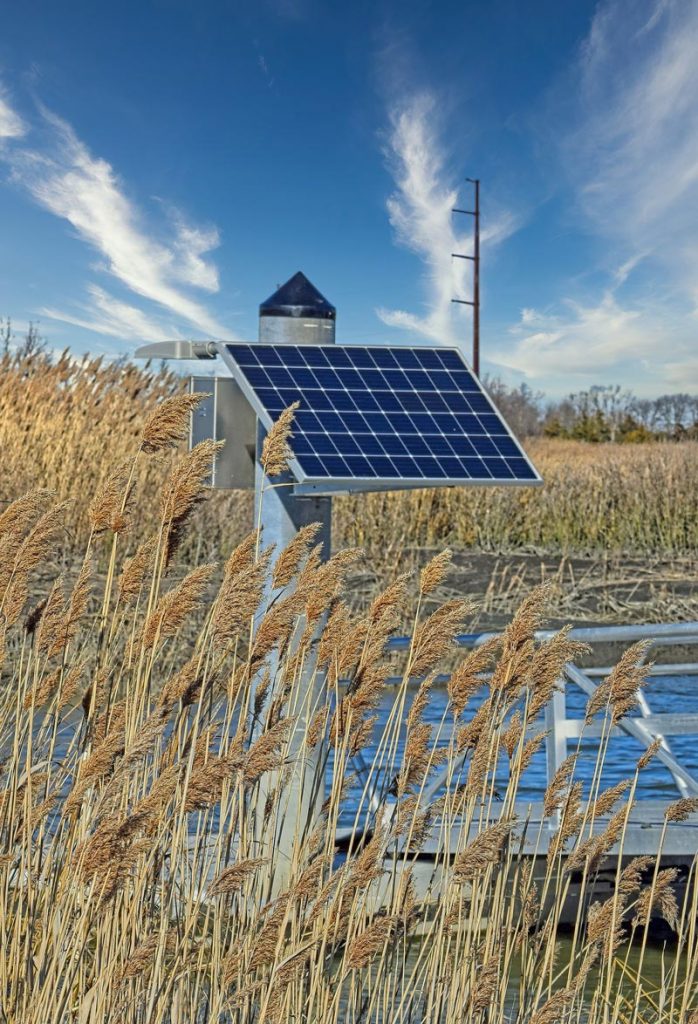
But we didn’t stop there…
We’ve written this review to include extensive details on each one. Complete specifications are included and we’ve even rated them – and chosen our favorite Top 3 – which you can see both at the beginning and the end of the article.
Benjamin is a camping nut but also a bit of a techie. Whilst some people prefer to unplug when they’re on a trip, Ben is the opposite – he actually prefers to be well and truly wired at all times, meaning the Solar Charger project was just perfect for him.
We hope you enjoy reading it as much as he enjoyed researching and writing it.
Buyers Guide:
How To Choose The Best Solar Panels and Chargers (Portable)
Different Types of Portable Panel
A solar charger works by using light energy to produce electricity. Since the sun is the brightest source of light, we refer to it as a solar panel, but actually, they are known as photovoltaic cells.
Thin slices of silicon are coated with adjacent layers of phosphorus and boron, making them “n” and “p” types.
The “n” type has a surplus of electrons causing a potential difference (see above), and when both ends are joined, there is the flow of electricity. The power from thousands of these cells accumulates to provide 15-100 watts.
There are three types of photovoltaic cells in use – monocrystalline, polycrystalline, and thin-film.
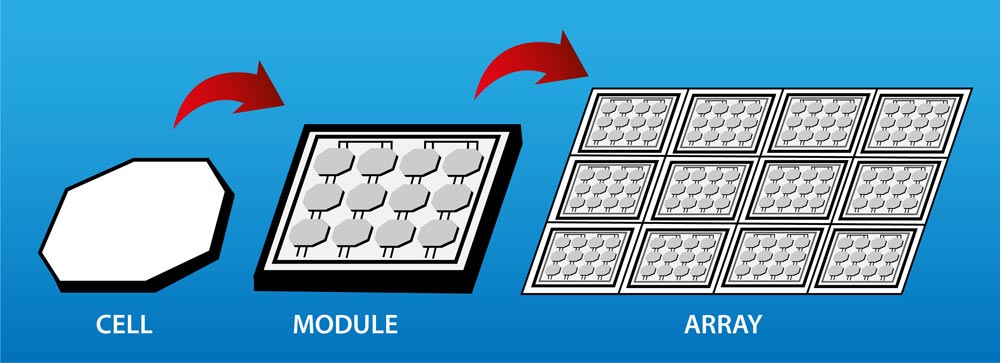
The Bottom Line:
Monocrystalline cells have a single crystal making it better performing but also more expensive. They have high power output (relative to surface area) and are almost black.
A polycrystalline cell is made of many smaller crystals that are cut and arranged to have a larger surface area. This will be a bluish panel which is cheaper but not very durable. They are less efficient than a monocrystalline panel and provide less power per square inch.
Thin-film solar panels are made of cadmium telluride. Since they are only 0.3% of the thickness of the above types, they have better aesthetics. But they also have the least power output.
Features to Look Out For
Amperage, Voltage, and Watts. These are three terms you are continually going to come up against when buying a portable solar charger and also probably the most significant. We restrict this discussion to Direct Current.
Voltage Means A Potential Difference.
If there are more electrons at one end of a metal wire (negative pole) and less at the other end (positive pole), electrons will flow from negative to the positive pole. It’s like water flowing from a rooftop tank to a faucet ten floors below. The more the water, the more the pressure or, in our case, the more the voltage.
Amperage is the number of electrons flowing through the wire per second. It is measured in amperes or amps. It is similar to the liters/sec of water flowing through the pipe, joining the tank and the faucet.
Wattage is the work done by electricity. It is measured as Volt x Amps. So, 12 volts and 2 amps mean 24 watts.
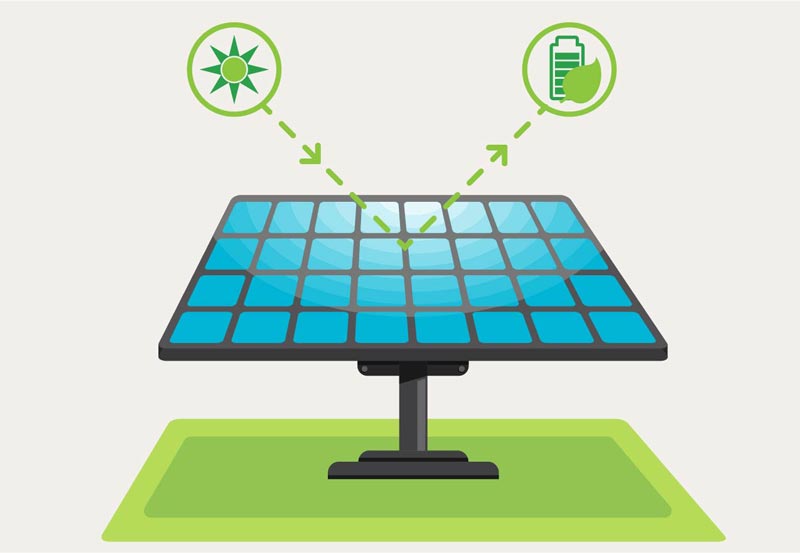
Still with me?
The charging of devices is restricted by volts and watts. A solar phone charger produces about 10 volts and 1 amp (may vary widely 8-12 volts). Those 10 watts cannot be supplied through 1000 volts and 0.01 amps because it will destroy the phone.
…and you don’t want that.
Top Tips
What criteria are most important?
A good solar panel will be monocrystalline. Naturally, more power will come with greater area.
Simple right?
BUT:
That also means it will be heavier and more expensive ($$$).
How much output depends on your need. If you are looking to recharge your camera battery and smart device/GPS, then 40 watts is more than enough.
HOWEVER:
If you want to run a tiny refrigerator and few LED lamps besides charging a battery pack, you would need a 2 x 100-watt setup at least.
They also come with a variety of outlets.
These popularly include a 12 volt and 8 amps outlet for portable solar generators like Goal Zero Yeti 150 / 400 Power Station, Suaoki, and Jackery. There are also 2/3 USB ports for using gadgets.
If it is able to handle multiple devices at the same time, that is preferable. The bigger ones that are at least 40 watts can charge laptops.
There is also the matter of form factor.
They should fold to fourths instead of half making it easier to carry. There should be a carry handle.
Other important criteria include a warranty. A one year warranty is desirable there’s no doubt about that.
If you are going to take them along on a camping trip, they need to weigh less than 10 lbs, preferably.
Frequently Asked Questions (FAQs)
Q: How many watt solar panels do I need when I am camping?
A: Rule of thumb a 100-watt solar charger produces about 30 amp-hours per day. To give full power to an RV you will need 2 solar panels (around 100 watts each). Or to run camping refrigerators is around 120 – 160 watts.
Q: Can you run a 12-volt fridge from a solar panel?
A: You will need to have a 12v fridge (compressor type) that is specifically designed to run off a 110Ah Battery, that in turn will be topping up a 120 – 160 watts Solar charger.
Q: How long does a portable solar panel last?
A: Short answer 30 years. However, that depends on the quality of your panel, how well it has been maintained and the elements its been exposed to.
Q: Can I connect the solar panel directly to the battery?
A: Connecting a solar phone charger directly to your bank of batteries is not a good idea, but may work. You could overcharge the battery which would cause the electrolyte solution in the batteries to overheat.
Q: Do solar panels work at night?
A: Solar panels need sunlight to work so they do not work in darkness
Do you now feel confident with the knowledge to buy your solar phone chargers with confidence?
WELL:
We’ve made it easier for you.
We’ve done all the hard work researching testing, rating.
IN FACT:
We’ve left no stone unturned.
So go check out our ratings below, we’ve got you covered…
Our Analysis, Comparisons & Test Results
Value of Money
When it comes to portable solar chargers, the top-end models are priced at a few hundred bucks. Thus the investment is very little when compared to other gear.
NOW:
Of course, it has to be durable and have a large power output between 100-300 watts for that price.
Value of Money Rating
What you are basically looking for are an extended warranty and relatively high performance. Most of the better solar panels have a 24% efficiency.
But some other factors should also be kept in mind. They should have an LCD display that shows charging progress and wattage available.
Look Out For:
The presence of a kickstand that allows tilting to face the sun is also preferable. Besides, some manufacturers provide plenty of DC adapters in various sizes (e.g., 8 mm, 2.5 mm, etc.) to hook up the solar panel to solar generators.
Most of the monocrystalline panels last at least 3-4 years with regular use.
Hence what is needed if you want good value for money boils down to…
Monocrystalline cells, wattage, number of outlets, low weight, and compact form factor in that order. That is the basis on which we decided value for money.
Special Mentions:
For circa couple hundred bucks Rockpals 100W gives you 3 USB and one 9 volt outlet. It’s also waterproof and can be used outdoors with a great deal of convenience. It easily folds into the size of a briefcase and can be carried.
Just under a foot long when folded the Nekteck 21W is perfect – maybe slightly big. If you’ve no problem with its size, then it’s a very well made product at an attractive price that has IPX4 level waterproofing.
BigBlue 5V 28W is made of a tough polymer which makes it completely waterproof. It also comes with a 2-year warranty. There’s also an ammeter so you can monitor the output at any time. A handy and affordable device.
Pricey and with all the bells and whistles you would expect from a top-end manufacturer, the Jackery SolarSaga 100W at a couple of hundred bucks is meant to be mated to a solar power generator. 18 volt and 5.6 amps are enough to power all your camping needs.
Charge Interruption Recovery
Why is solar power not used in place of thermal or nuclear power plants? The reason is that solar exposure is not that dependable in many places around the world.
Also, nuclear power isn’t cool when camping and hiking!
It is one thing for the solar charger to work when it is a cloudless day and another when the sky is cloudy – which is a common aspect of nature.
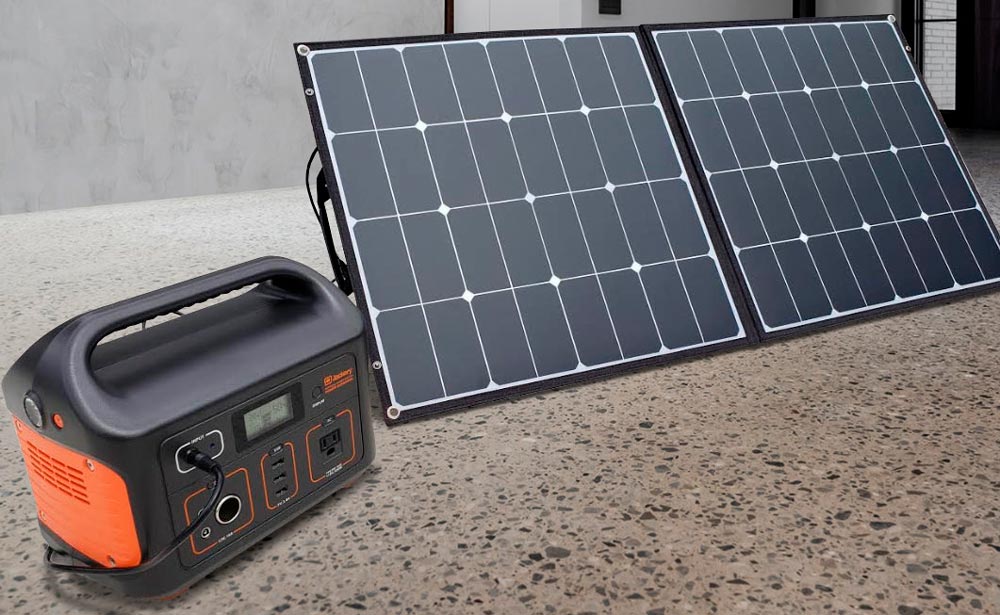
Charge Interruption Recovery Rating
The Problem is…
The electric potential difference drops rapidly if there is shade.
Charge Interruption Recovery is a measure of how fast the solar chargers are up to full capacity from near zero production. We tested all the devices with an ammeter and voltmeter to check how fast they recovered.
To simulate cloudy conditions, we used a large garden umbrella that was used to create shade sporadically. Since our testing conditions had to be identical for all devices, we could not depend on real clouds to do the job.
You might be wondering:
The best solar chargers recovered in less than 10 seconds, while some took up to 30 seconds. Also, we suspect that few had built-in circuitry that prevented the power from coming online too quickly and causing wide voltage fluctuations.
Very quick voltage changes might not hamper the charging of a cell phone but definitely would cause problems if you were running a 300-watt heater.
Charging Speeds
There is no set way to measure charging speed. It, of course, depends on the total wattage output but also the device that is being charged.
However:
There is also the matter of the interior charging circuit and if it is smart enough to provide sufficient wattage.
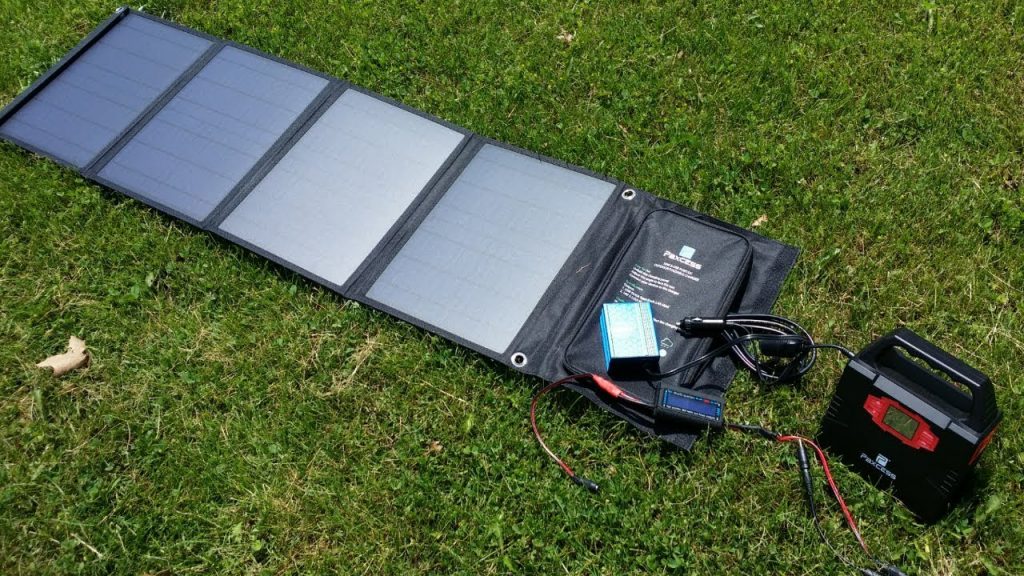
Charging Speed Rating
Since there are so many types of rechargeable batteries we use – Ni-cad, Li-Po, Li-Ion – we decided to recharge two phones (both Google Pixel Pro with 2,800 mAh Li-Po battery) from 0 to 100%.
Here’s the kicker:
A laptop would have been too large for a few of our solar charger to recharge.
Those that could not recharge multiple devices were connected to a single phone. We used the Ampere app from the Google Play Store to measure incoming milliamps.
Those solar chargers that showed consistent reading were given a higher score.
However:
We found that it is also important that it is essential to make the solar phone charger face the sun at the correct inclination. It does affect the charging potential and speed.
Multiple Device Charging Speed
No one has just a single smartphone to charge. You need to charge at least 2-3 portable devices to charge at the same time.
And if you have a teenager…
Well enough said.
Almost every solar phone charger has at least two USB ports.
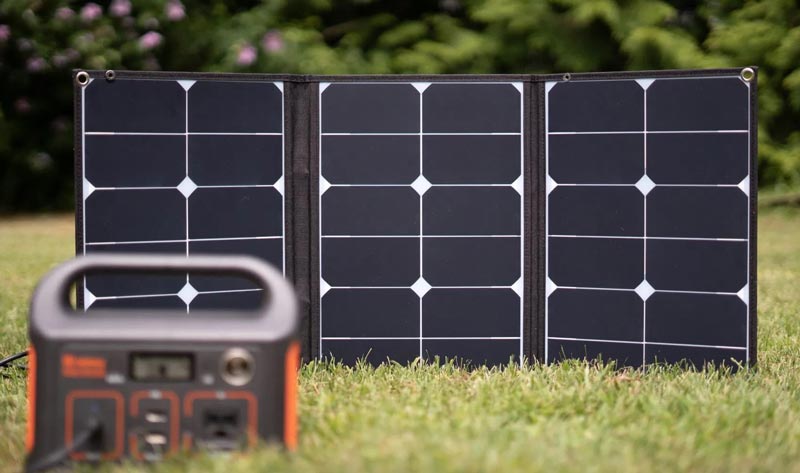
Multiple Device Charging Speed Rating
Unfortunately:
They do not provide a 10-watt output for a higher-capacity solar phone charger. The maximum you can avail is about 3-6 amps at 2.5 volts. The more the total amperage supplied by all the USB ports, the faster they will charge multiple devices.
This means that multiple device charging speed might drop slightly than if you were charging devices (multiple) at the same time. Also, all the modern solar chargers have an IC-based circuit board that exactly matches the recharging device input.
Special Mentions:
When it comes to charging multiple devices, the Rockpals 100W with its 3 USB outlets and 10 watts per port output is one of the quickest. There is plenty of power on tap for whatever number of devices you need to charge.
The HQST 100 Watt does not have any inbuilt charging ports, but it does have plenty of juice. If you configure the output properly through an RV junction box, it can charge at least five devices pretty rapidly.
You could charge five devices at a time using high amperage with the Jackery SolarSaga 100W. It’s really capable, and even when the weather’s cloudy it’ll allow you to charge swiftly.
Durability
It goes without saying that solar panels spend their time out in the elements. Thus, durability is an essential factor. It might work well in your garden, in soothing New Jersey autumn but will it do the same on a trip to Yosemite.
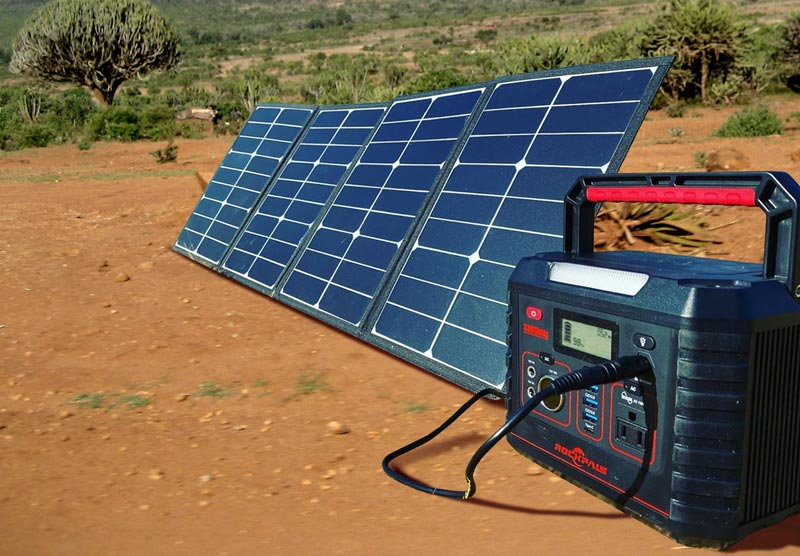
Durability Rating
On the whole:
The solar panels we tested were fundamentally excellent in this regard. Of course, we tested them for a month and not a year. That has to be taken into account.
But a large part of our testing was done while camping at Lost Dutchman State Park in Arizona, and the temperature was in the mid-30s mostly with cold nights.
In spite of the temperature difference, the panels did not warp.
Of course, there is also the issue of surviving a fall. Solar panels are delicate and most likely would get cracked if they crashed while open. If they are closed and packed, then there is definitely a chance that they would survive fall from your shoulder but nothing more drastic.
All of them are moisture-proof, and some are waterproof, which we tested to about 6 feet. They are all ruggedly built, some more so than others, and would survive several years since the photovoltaic cell produces no heat.
Weight & Portability
Rating these products for weight caused some debate within the TopNotch team – because not all panels are created equal. Some you fold up and put in your pocket for a festival or in the Outback. Others are big and bulky and sit on top of your RV and generate much more power.
After many hours and even more cups of coffee and a couple of tantrums, we had the ‘aha’ moment.
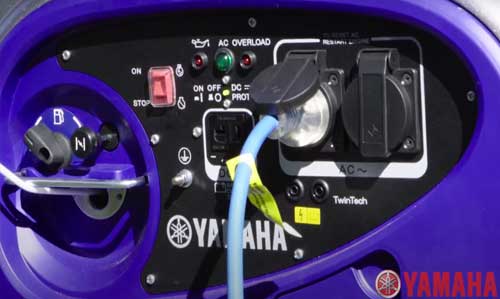
Weight & Portability Rating
‘Why don’t we rate like-for-like products in the same field together?’.
The voice of reason.
So this metric is scored on the basis of similar products compared side by side.
The smallest of these solar panels weigh about a pound and can be carried in your jacket pocket. The largest panels need to be folded and moved like a briefcase as they weigh about ten pounds.
All of them fold up nicely into a quarter and become the size of a large solar power bank (for the smallest) to a briefcase (for the largest).
Considering that it is a fully functional power plant that is not really much weight. Most portable generators weigh more than fifty pounds.
They can be rapidly carried around on your backpack and set up in just a minute or two. The inbuilt scaffolding helps to open them, like an umbrella, and folds it back the same way.
The weight will be an issue if you are looking to carry several of them and join them in a daisy chain to get an output of 400 watts.
But in that case…
You would most likely bring them on the back of a pickup.
Are they convenient?
Yes, incredibly.
…and never seem cumbersome is what we found in our tests outdoors.
In fact:
Carrying large telephoto lenses and a video camera carefully is more of a hassle during my trips than taking one of these.
Special Mentions:
The BigBlue 28 watts folded to almost the same size as Nekteck 21W, but it is five folds in place of three and thus thicker. 20 ounces can be carried easily on a hiking/ camping trips, and we prefer it to the smaller Nekteck.
Alternatively, Newpowa 20W weighs just 3.5 lbs and folds to 7 inches square. It is small enough to fit into a large pocket — the most convenient to carry around among all that we tested.
Jackery SolarSaga is large and only folds into two, unlike the Rockpals, but weighs about 1.5 lbs less than its closest competitor. You could carry it on a camping trip without too many issues.
Our Final Verdict: Best Portable Solar Chargers
Now I’d like to turn things over to you:
Which solar panel is right for you?
Will it be one from our TopNotch awards or will it be a different one from our list.
To help you here they are in their overall rating order:
Conclusion: Best Portable Solar Panels & Phone Chargers
So now you have it.
It doesn’t matter whether you’re looking to charge your media devices while you’re at a festival, in your RV in the backcountry, or just looking for a greener way of life.
We’ve found something for you.
We’ve reviewed eight stellar and respectable choices from fully-fledged powerhouses to small wallet-sized devices.
Among the biggies, the best of the bunch was obviously Jackery SolarSaga 100W.
It is the most expensive but also the most versatile, and we have a strong belief in its manufacturer’s goodwill.
Among the wallet-sized products (for festival goers), the BigBlue USB 5V Ports 28W with digital ammeter was most exciting, not only because of its affordability but also overall impression and quality. It’s waterproof and fast charging. This is our TopNotch Top Pick.
There are many more makes and models in the market, but we chose to focus on those that had great peer reviews instead of low-quality products. Each of these is a winner in its own way.

![9 Best Portable Solar Panels & Chargers ([currentyear])<br> Definitive Review q? encoding=UTF8&MarketPlace=US&ASIN=B07Q71LX84&ServiceVersion=20070822&ID=AsinImage&WS=1&Format= SL250 &tag=topnotch096 20](http://ws-na.amazon-adsystem.com/widgets/q?_encoding=UTF8&MarketPlace=US&ASIN=B07Q71LX84&ServiceVersion=20070822&ID=AsinImage&WS=1&Format=_SL250_&tag=topnotch096-20)
![9 Best Portable Solar Panels & Chargers ([currentyear])<br> Definitive Review q? encoding=UTF8&MarketPlace=US&ASIN=B07WXSCTSV&ServiceVersion=20070822&ID=AsinImage&WS=1&Format= SL250 &tag=topnotch096 20](http://ws-na.amazon-adsystem.com/widgets/q?_encoding=UTF8&MarketPlace=US&ASIN=B07WXSCTSV&ServiceVersion=20070822&ID=AsinImage&WS=1&Format=_SL250_&tag=topnotch096-20)
![9 Best Portable Solar Panels & Chargers ([currentyear])<br> Definitive Review q? encoding=UTF8&MarketPlace=US&ASIN=B071G4CQSR&ServiceVersion=20070822&ID=AsinImage&WS=1&Format= SL250 &tag=topnotch096 20](http://ws-na.amazon-adsystem.com/widgets/q?_encoding=UTF8&MarketPlace=US&ASIN=B071G4CQSR&ServiceVersion=20070822&ID=AsinImage&WS=1&Format=_SL250_&tag=topnotch096-20)
![9 Best Portable Solar Panels & Chargers ([currentyear])<br> Definitive Review q? encoding=UTF8&MarketPlace=US&ASIN=B07FH85FW9&ServiceVersion=20070822&ID=AsinImage&WS=1&Format= SL250 &tag=topnotch096 20](http://ws-na.amazon-adsystem.com/widgets/q?_encoding=UTF8&MarketPlace=US&ASIN=B07FH85FW9&ServiceVersion=20070822&ID=AsinImage&WS=1&Format=_SL250_&tag=topnotch096-20)
![9 Best Portable Solar Panels & Chargers ([currentyear])<br> Definitive Review q? encoding=UTF8&MarketPlace=US&ASIN=B017GQ7OEA&ServiceVersion=20070822&ID=AsinImage&WS=1&Format= SL250 &tag=topnotch096 20](http://ws-na.amazon-adsystem.com/widgets/q?_encoding=UTF8&MarketPlace=US&ASIN=B017GQ7OEA&ServiceVersion=20070822&ID=AsinImage&WS=1&Format=_SL250_&tag=topnotch096-20)
![9 Best Portable Solar Panels & Chargers ([currentyear])<br> Definitive Review q? encoding=UTF8&MarketPlace=US&ASIN=B01EXWCPLC&ServiceVersion=20070822&ID=AsinImage&WS=1&Format= SL250 &tag=topnotch096 20](http://ws-na.amazon-adsystem.com/widgets/q?_encoding=UTF8&MarketPlace=US&ASIN=B01EXWCPLC&ServiceVersion=20070822&ID=AsinImage&WS=1&Format=_SL250_&tag=topnotch096-20)
![9 Best Portable Solar Panels & Chargers ([currentyear])<br> Definitive Review q? encoding=UTF8&MarketPlace=US&ASIN=B07L8XWJ1X&ServiceVersion=20070822&ID=AsinImage&WS=1&Format= SL250 &tag=topnotch096 20](http://ws-na.amazon-adsystem.com/widgets/q?_encoding=UTF8&MarketPlace=US&ASIN=B07L8XWJ1X&ServiceVersion=20070822&ID=AsinImage&WS=1&Format=_SL250_&tag=topnotch096-20)
![9 Best Portable Solar Panels & Chargers ([currentyear])<br> Definitive Review q? encoding=UTF8&MarketPlace=US&ASIN=B00W813E4I&ServiceVersion=20070822&ID=AsinImage&WS=1&Format= SL250 &tag=topnotch096 20](http://ws-na.amazon-adsystem.com/widgets/q?_encoding=UTF8&MarketPlace=US&ASIN=B00W813E4I&ServiceVersion=20070822&ID=AsinImage&WS=1&Format=_SL250_&tag=topnotch096-20)
![10 Best Handheld GPS: Definitive Review ([currentyear]) 10 Best Handheld GPS: Definitive Review (2024)](https://topnotchoutdoor.com/wp-content/uploads/2020/03/Handheld-GPS-FI-768x480.jpg)
![Best 12 Person Tent: <br>Definitive Review (Buyer’s Guide) ([currentyear]) Best 12 Person Tent: Definitive Review (Buyer’s Guide) (2024)](https://topnotchoutdoor.com/wp-content/uploads/2020/08/Best-12-Person-Tent-X-for-YFeature-opt-2-768x480.jpg)
![10 Best Teepee Tents [UPDATED]: Definitive Review ([currentyear]) 10 Best Teepee Tents [UPDATED]: Definitive Review (2024)](https://topnotchoutdoor.com/wp-content/uploads/2020/07/Teepee-Tents-FI-3-768x480.jpg)
![Rockpals 100w Foldable Solar Panel Charger: Definitive Review ([currentyear]) Rockpals 100w Foldable Solar Panel Charger: Definitive Review (2024)](https://topnotchoutdoor.com/wp-content/uploads/2020/06/Rockpal-100W-Solar-Panel-FI-768x480.jpg)
![10 Best Ice Fishing Gloves ([currentyear])<br>Definitive Guide [New Research] 10 Best Ice Fishing Gloves (2024)Definitive Guide [New Research]](https://topnotchoutdoor.com/wp-content/uploads/2021/03/The-Best-Ice-Fishing-Gloves-FI-768x480.jpg)
![10 Best Inflatable Paddle Board ([currentyear])<br> Definitive Guide [New Research] 10 Best Inflatable Paddle Board (2024) Definitive Guide [New Research]](https://topnotchoutdoor.com/wp-content/uploads/2021/01/Best-Inflatable-Paddle-Board-FI-768x480.jpg)